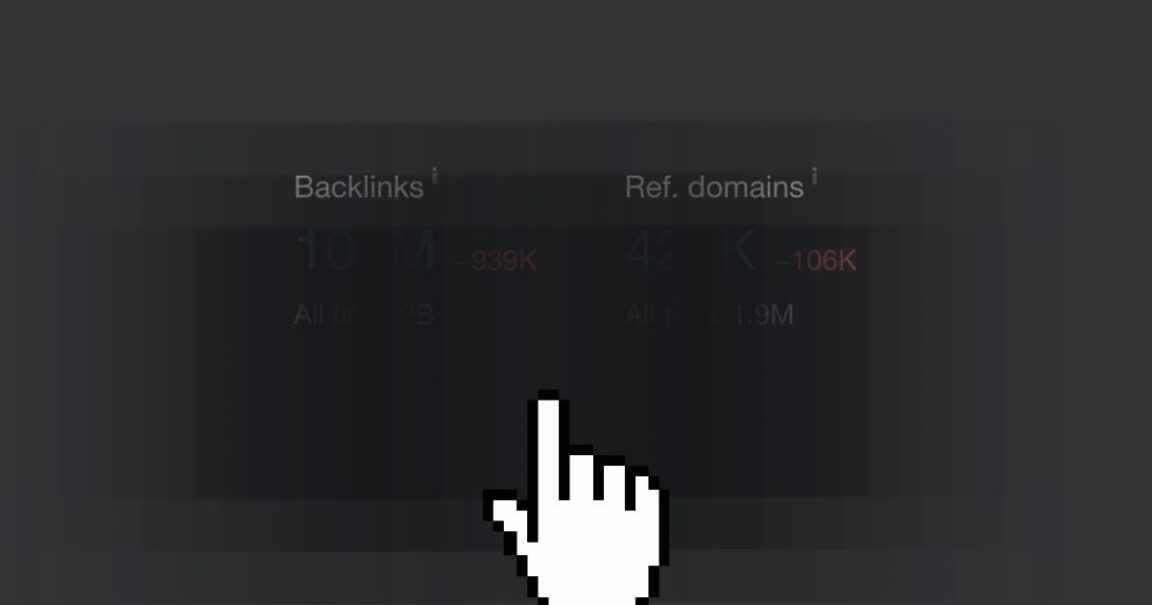In the world of SEO, backlinks are like your secret sauce—an essential part of your strategy that drives rankings and organic growth. But what happens when competitors spy on your backlinks, replicate them, and dilute your edge? This is a common concern among marketers and SEO professionals.
If you’re wondering how to hide backlinks from competitors, you’re in the right place. In this comprehensive guide, we’ll explore actionable strategies to safeguard your backlink profile without violating ethical or SEO guidelines.
Table of Contents
Why Should You Hide Backlinks?
Your backlink profile is a treasure trove of insights for competitors. By analyzing your links, they can:
1. Replicate Your Efforts
Competitors can use tools like Ahrefs or SEMrush to identify your top-performing backlinks and replicate them.
2. Negatively Impact Your Rankings
Malicious competitors might try black-hat techniques, such as building toxic backlinks to your site.
3. Steal Your Partnerships
They can approach your linking domains with better offers, jeopardizing your established relationships.
Protecting your backlink profile ensures that your hard-earned SEO efforts stay unique and impactful.
Effective Ways to Hide Backlinks From Competitor
1. Block Crawlers From SEO Tools
Many SEO tools, like Ahrefs and SEMrush, rely on bots to crawl your website and backlink profile. By blocking these bots, you can prevent them from indexing your backlinks.
How to Do It:
Add the following lines to your robots.txt
User-agent: AhrefsBot
Disallow: /
User-agent: SEMrushBot
Disallow: /
User-agent: Moz
Disallow: /Test your robots.txt file using Google Search Console to ensure proper implementation.
Pros:
- Directly blocks major SEO crawlers.
- Easy to implement for most websites.
Cons:
- Doesn’t block all crawlers, as some smaller tools may not respect
robots.txt. - Doesn’t hide links from manual research or Google crawlers.
2. Use Cloaking Techniques
Cloaking is the practice of showing different content to search engines than what visitors see. This method is often used for specific backlinks, keeping them visible only to search engines while hiding them from competitors.
How to Do It:
Use JavaScript to load links dynamically. Crawlers typically struggle to process JavaScript-rendered content.
Example code snippet:
<script>
document.write('<a href="https://example.com">Hidden Backlink</a>');
</script>Pros:
- Limits visibility to bots while keeping links functional for SEO.
- Adds an extra layer of protection.
Cons:
- May violate Google’s Webmaster Guidelines if overused.
- Requires technical expertise to implement correctly.
3. Leverage No-Index for Sensitive Pages
If certain pages on your site contain links you don’t want competitors to see, you can set those pages to “no-index.” This prevents them from being indexed by search engines.
How to Do It:
Add the following meta tag to the <head> section of your page:
<meta name="robots" content="noindex, nofollow">Alternatively, use a CMS plugin (e.g., Yoast SEO for WordPress) to set pages as no-index.
Pros:
- Keeps sensitive pages out of search engine results entirely.
- Simple to implement with the right tools.
Cons:
- No-indexed pages lose their SEO value.
- Competitors may still access these links manually.
4. Use Private Blog Networks (PBNs) Strategically
Private Blog Networks (PBNs) are often used to create hidden, high-authority backlinks. These networks consist of websites you own, providing backlinks that competitors can’t easily detect.
How to Do It:
- Purchase expired domains with existing authority.
- Build high-quality content on these domains and link back to your main website.
- Avoid interlinking your PBN sites to keep them untraceable.
Pros:
- Offers complete control over your backlinks.
- Provides a hidden source of link equity.
Cons:
- Requires significant investment in domains and hosting.
- High risk if not managed properly, as it may violate Google’s policies.
5. Create Unique Relationships
Building exclusive partnerships with high-authority websites can make it difficult for competitors to replicate your backlinks.
Tips:
- Focus on niche-specific websites with limited advertising or guest posting opportunities.
- Build strong relationships with content editors and decision-makers.
- Offer exclusive content or co-marketing campaigns.
Pros:
- Hard to replicate for competitors.
- Strengthens your authority in the niche.
Cons:
- Requires ongoing effort and relationship management.
What You Should Avoid
While hiding backlinks can be a smart strategy, it’s crucial to avoid unethical practices. Here’s what NOT to do:
- Blocking Google’s Crawler: Never block Googlebot, as this will harm your website’s visibility and rankings.
- Using Black-Hat Tactics: Avoid spamming or misleading practices that violate Google’s guidelines.
- Overdoing Cloaking: If caught, cloaking can lead to penalties or deindexing.
FAQs
-
Can hiding backlinks hurt my SEO?
If done correctly, no. However, overusing cloaking techniques or blocking Google crawlers can harm your rankings.
-
Is it possible to hide backlinks entirely?
No, you can’t hide backlinks completely. However, you can make it challenging for competitors to access them by blocking SEO tools and leveraging advanced techniques.
-
Should I use private blog networks (PBNs)?
PBNs can be effective if managed carefully, but they come with risks. If discovered, they can lead to penalties.
-
Are there ethical ways to protect my backlinks?
Yes, focus on building exclusive relationships, blocking specific crawlers, and using no-index tags for sensitive pages.
-
What’s the best tool to monitor my backlinks?
Tools like Ahrefs, SEMrush, and Moz are excellent for monitoring backlinks and detecting potential threats from competitors.



GIPHY App Key not set. Please check settings
One Comment